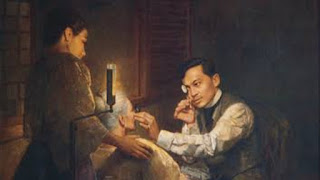Search results: 2070
This course deals with the software and hardware concepts of microprocessor and microcontroller, microprocessor and microcontroller families, architecture design and system. It also includes the semiconductor memory devices and systems, different language programming, I/O programming, I/O interface design, I/O peripheral devices, data communications, and data acquisition systems. Several laboratory exercises will be based on both microprocessor and microcontroller. And application of both interfaces techniques thru lecture and laboratory.
- Teacher: CC_Dennis Tabucol
Category: Carmona Campus
This course deals with fundamentals of industrial electronic devices such as SCRs, Triacs, and UJTs, and study of discrete control input and output devices; solid state devices, operational amplifiers and integrated circuits for industrial applications; discrete automatic sensors and devices; analog process control and sensors; motors and their drive systems for industrial applications. And also the introduction to robotics. It also involves related experiments and project making as major activities of the laboratory.
- Teacher: CC_Dennis Tabucol
Category: Carmona Campus
This course deals with the software and hardware concepts of microprocessor and microcontroller, microprocessor and microcontroller families, architecture design and system. It also includes the semiconductor memory devices and systems, different language programming, I/O programming, I/O interface design, I/O peripheral devices, data communications, and data acquisition systems. Several laboratory exercises will be based on both microprocessor and microcontroller. And application of both interfaces techniques thru lecture and laboratory.
- Teacher: CC_Dennis Tabucol
Category: Carmona Campus
- Teacher: CC_Dennis Tabucol
Category: Carmona Campus
This course is not yet visible to your students. Please don't forget to set the course visibility settings to "Show" when your course is ready. Refer to "4.1.1 HOW TO MANAGE COURSE SETTINGS" of the Teacher's Guide.
- Teacher: CAS_Shaira Lobrio
Category: CAS
- Teacher: CCJ_Kaycelyn Ramos
Category: CCJ
- Teacher: CCJ_Kaycelyn Ramos
Category: CCJ
- Teacher: CCJ_Kaycelyn Ramos
Category: CCJ
- Teacher: CCJ_Kaycelyn Ramos
Category: CCJ
Intellectual Property Rights refers to creations of the mind and the ownership of the
person who came up with it. Through the series of this course, we will focus on
discussion of copyrights, patents and provides a brief look at trademarks and trade
secrets. We will also have the comparisons of what can and cannot be protected, and
what rights the owner does and does not obtain. Security issues relating to information
technology, biogenetic materials, and business methods are also highlighted. And most
importantly, how to contribute in protecting intellectual properties from disclosure by
recognizing and neutralizing serious threats.
person who came up with it. Through the series of this course, we will focus on
discussion of copyrights, patents and provides a brief look at trademarks and trade
secrets. We will also have the comparisons of what can and cannot be protected, and
what rights the owner does and does not obtain. Security issues relating to information
technology, biogenetic materials, and business methods are also highlighted. And most
importantly, how to contribute in protecting intellectual properties from disclosure by
recognizing and neutralizing serious threats.
- Teacher: CCJ_Kaycelyn Ramos
Category: CCJ
This course is not yet visible to your students. Please don't forget to set the course visibility settings to "Show" when your course is ready. Refer to "4.1.1 HOW TO MANAGE COURSE SETTINGS" of the Teacher's Guide.
- Teacher: CCJ_Marissa Lontoc
Category: CCJ
Intellectual Property Rights refers to creations of the mind and the ownership of the
person who came up with it. Through the series of this course, we will focus on
discussion of copyrights, patents and provides a brief look at trademarks and trade
secrets. We will also have the comparisons of what can and cannot be protected, and
what rights the owner does and does not obtain. Security issues relating to information
technology, biogenetic materials, and business methods are also highlighted. And most
importantly, how to contribute in protecting intellectual properties from disclosure by
recognizing and neutralizing serious threats.
person who came up with it. Through the series of this course, we will focus on
discussion of copyrights, patents and provides a brief look at trademarks and trade
secrets. We will also have the comparisons of what can and cannot be protected, and
what rights the owner does and does not obtain. Security issues relating to information
technology, biogenetic materials, and business methods are also highlighted. And most
importantly, how to contribute in protecting intellectual properties from disclosure by
recognizing and neutralizing serious threats.
- Teacher: CCJ_Kaycelyn Ramos
Category: CCJ
Intellectual Property Rights refers to creations of the mind and the ownership of the
person who came up with it. Through the series of this course, we will focus on
discussion of copyrights, patents and provides a brief look at trademarks and trade
secrets. We will also have the comparisons of what can and cannot be protected, and
what rights the owner does and does not obtain. Security issues relating to information
technology, biogenetic materials, and business methods are also highlighted. And most
importantly, how to contribute in protecting intellectual properties from disclosure by
recognizing and neutralizing serious threats.
person who came up with it. Through the series of this course, we will focus on
discussion of copyrights, patents and provides a brief look at trademarks and trade
secrets. We will also have the comparisons of what can and cannot be protected, and
what rights the owner does and does not obtain. Security issues relating to information
technology, biogenetic materials, and business methods are also highlighted. And most
importantly, how to contribute in protecting intellectual properties from disclosure by
recognizing and neutralizing serious threats.
- Teacher: CCJ_Kaycelyn Ramos
Category: CCJ
Sang-ayon sa ipinag-uutos ng Batas Republika 1425, sakop ng kursong ito ang buhay at mga akda ng pambansang bayani ng bansa si Jose Rizal. Ilan sa mga paksang sakop ay ang talmabuhay ni Rizal at kaniyang mga isinulat lalo na ang mga nobela niyang Noli Me Tangere at El Filibusterismo, ilan sa mga sanaysay at ibat-ibang liham.

- Teacher: CAS_Joy Rachel Dela Cruz
Category: Main Campus
This course provides an overview of the Computing Industry and Computing profession, including Research and Applications in different fields such as Biology, Sociology, Environment and Gaming: an Understanding ACM Requirements: an Appreciation of the history of computing: and Knowledge of the Key Components of Computer Systems (Organization and Architecture), Malware, Computer, Security, Internet and Internet protocols, HTML 4/5 and CSS.

- Teacher: TC_Mariz Samantila
Category: Tanza Campus
Sets, Functions and related operations to computer programming. It construct sound and arguments in propositional and predicate logic by applying appropriate rules of inference given sample intelligent software. Construct, valid mathematical proof using mathematical induction, direct proof and proof by contradiction to simplify programs and prove program correctness.

- Teacher: TC_John Paul De Torres
Category: Tanza Campus
This course is not yet visible to your students. Please don't forget to set the course visibility settings to "Show" when your course is ready. Refer to "4.1.1 HOW TO MANAGE COURSE SETTINGS" of the Teacher's Guide.
- Teacher: CEIT_Ma. Yvonne Czarina Angcaya
Category: CEIT
The course compares and contrasts procedural/ functional approach to object-oriented programming approach. This also covers designing, coding, testing and debugging programs using OOP concepts like abstraction, encapsulation, inheritance and polymorphism.

- Teacher: CEIT_Jake Ersando
Category: CEIT
The course compares and contrasts procedural/ functional approach to object-oriented programming approach. This also covers designing, coding, testing and debugging programs using OOP concepts like abstraction, encapsulation, inheritance and polymorphism.

- Teacher: CEIT_Jake Ersando
Category: CEIT
A course dealing with the study of the simple stress, simple strain, shear and moment of the beam, stresses in the beam, beam deflection and torsion.
- Teacher: Joel Gammayao
Category: CCATCampus